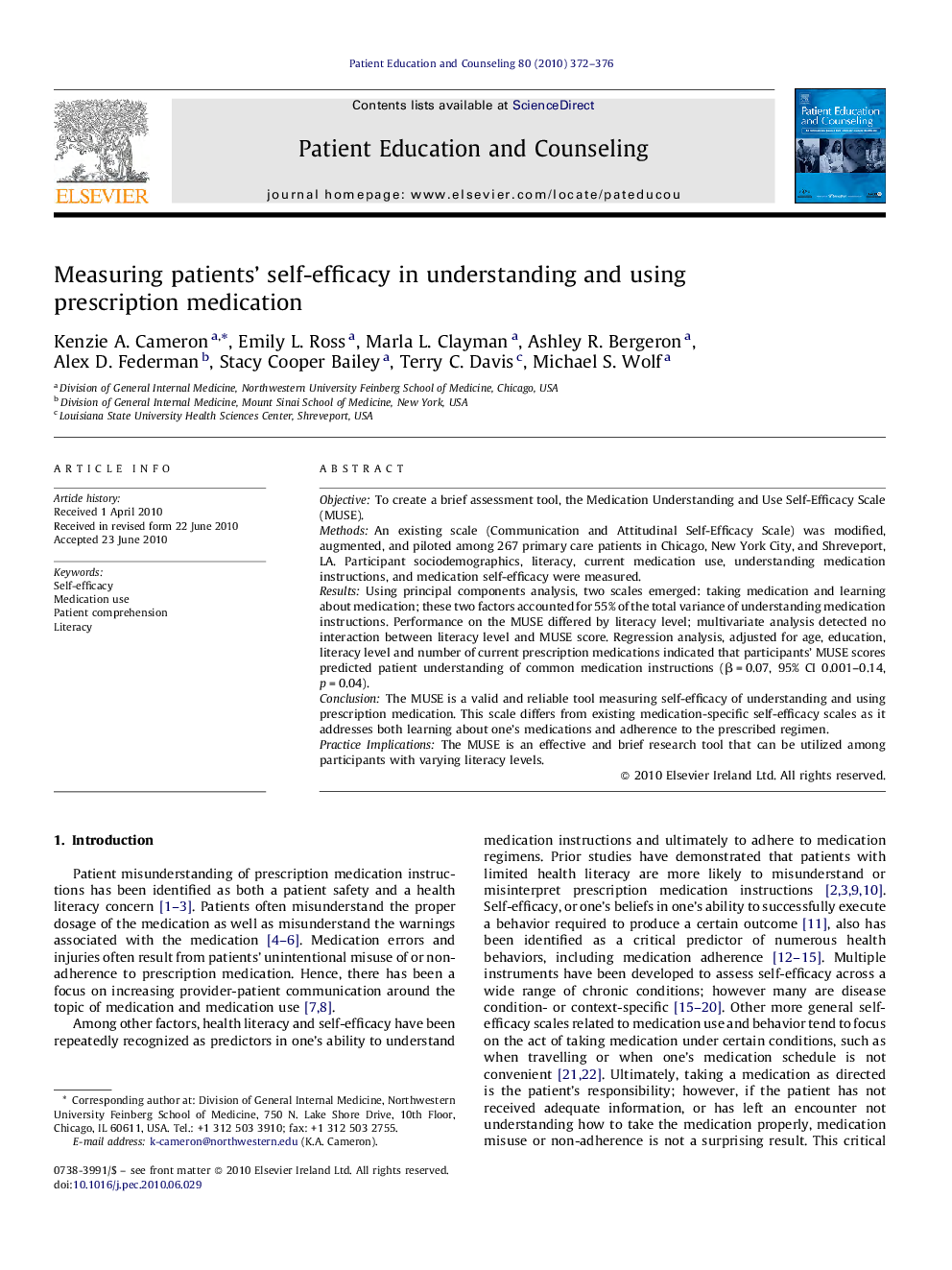| Article ID | Journal | Published Year | Pages | File Type |
|---|---|---|---|---|
| 3815406 | Patient Education and Counseling | 2010 | 5 Pages |
ObjectiveTo create a brief assessment tool, the Medication Understanding and Use Self-Efficacy Scale (MUSE).MethodsAn existing scale (Communication and Attitudinal Self-Efficacy Scale) was modified, augmented, and piloted among 267 primary care patients in Chicago, New York City, and Shreveport, LA. Participant sociodemographics, literacy, current medication use, understanding medication instructions, and medication self-efficacy were measured.ResultsUsing principal components analysis, two scales emerged: taking medication and learning about medication; these two factors accounted for 55% of the total variance of understanding medication instructions. Performance on the MUSE differed by literacy level; multivariate analysis detected no interaction between literacy level and MUSE score. Regression analysis, adjusted for age, education, literacy level and number of current prescription medications indicated that participants’ MUSE scores predicted patient understanding of common medication instructions (β = 0.07, 95% CI 0.001–0.14, p = 0.04).ConclusionThe MUSE is a valid and reliable tool measuring self-efficacy of understanding and using prescription medication. This scale differs from existing medication-specific self-efficacy scales as it addresses both learning about one's medications and adherence to the prescribed regimen.Practice ImplicationsThe MUSE is an effective and brief research tool that can be utilized among participants with varying literacy levels.
